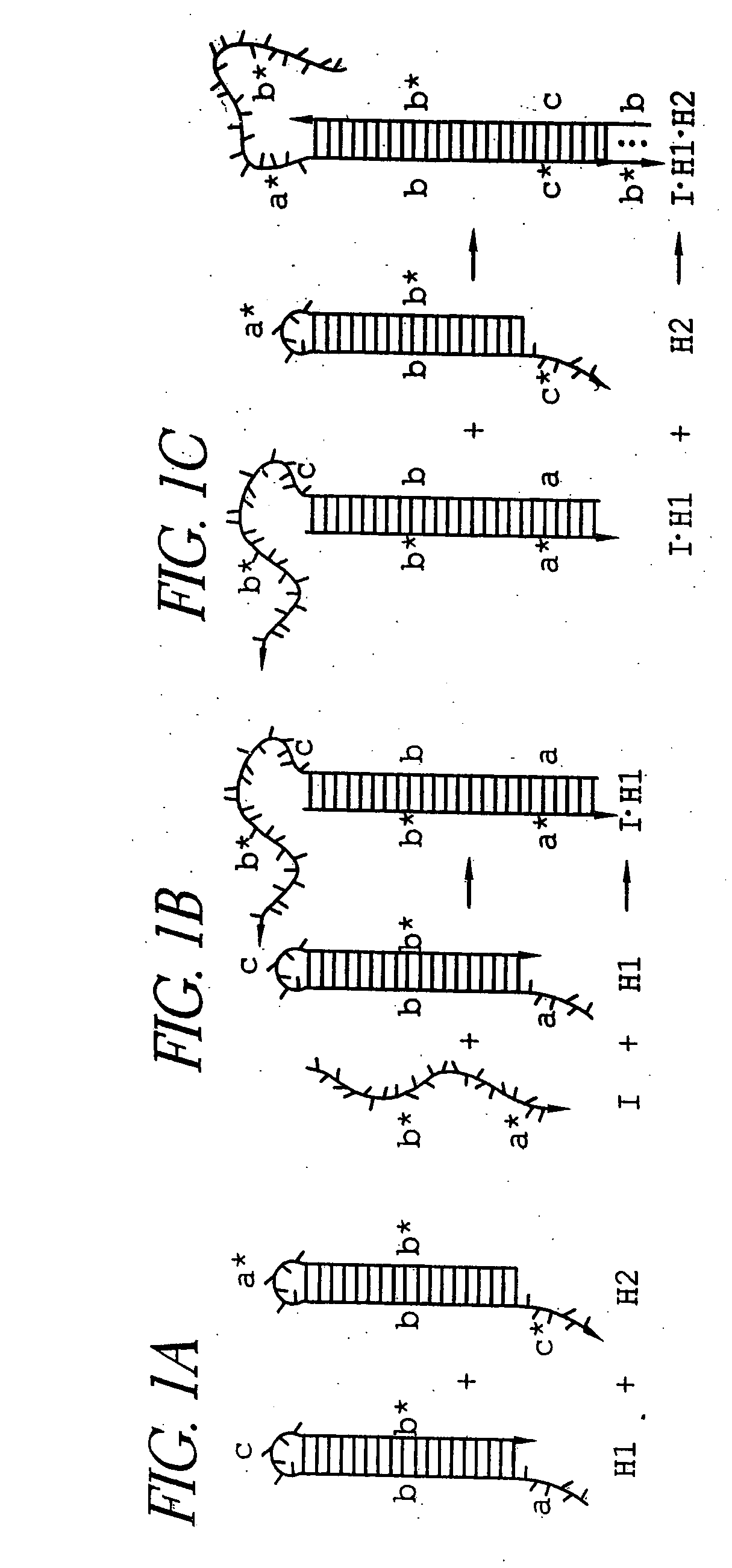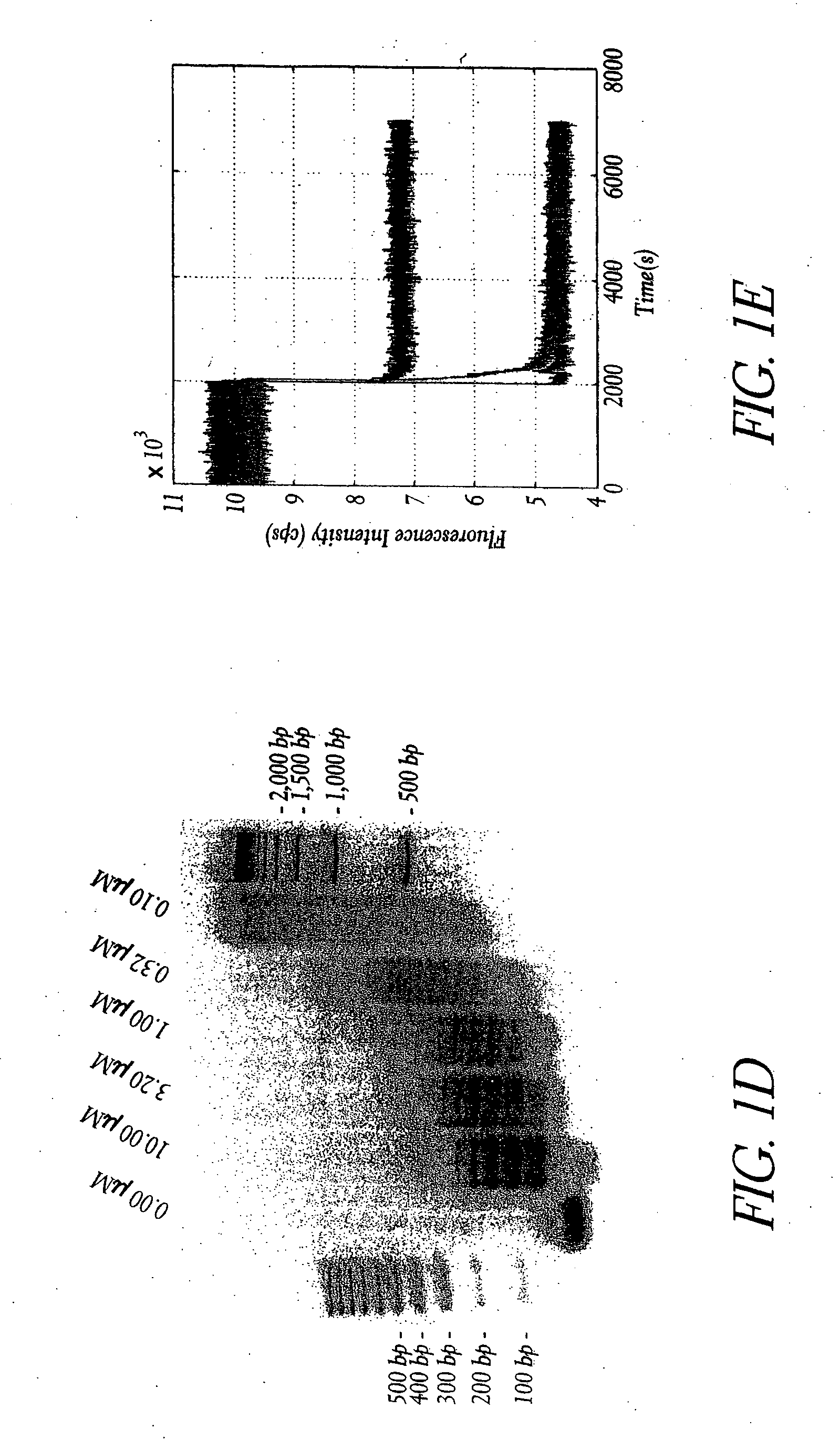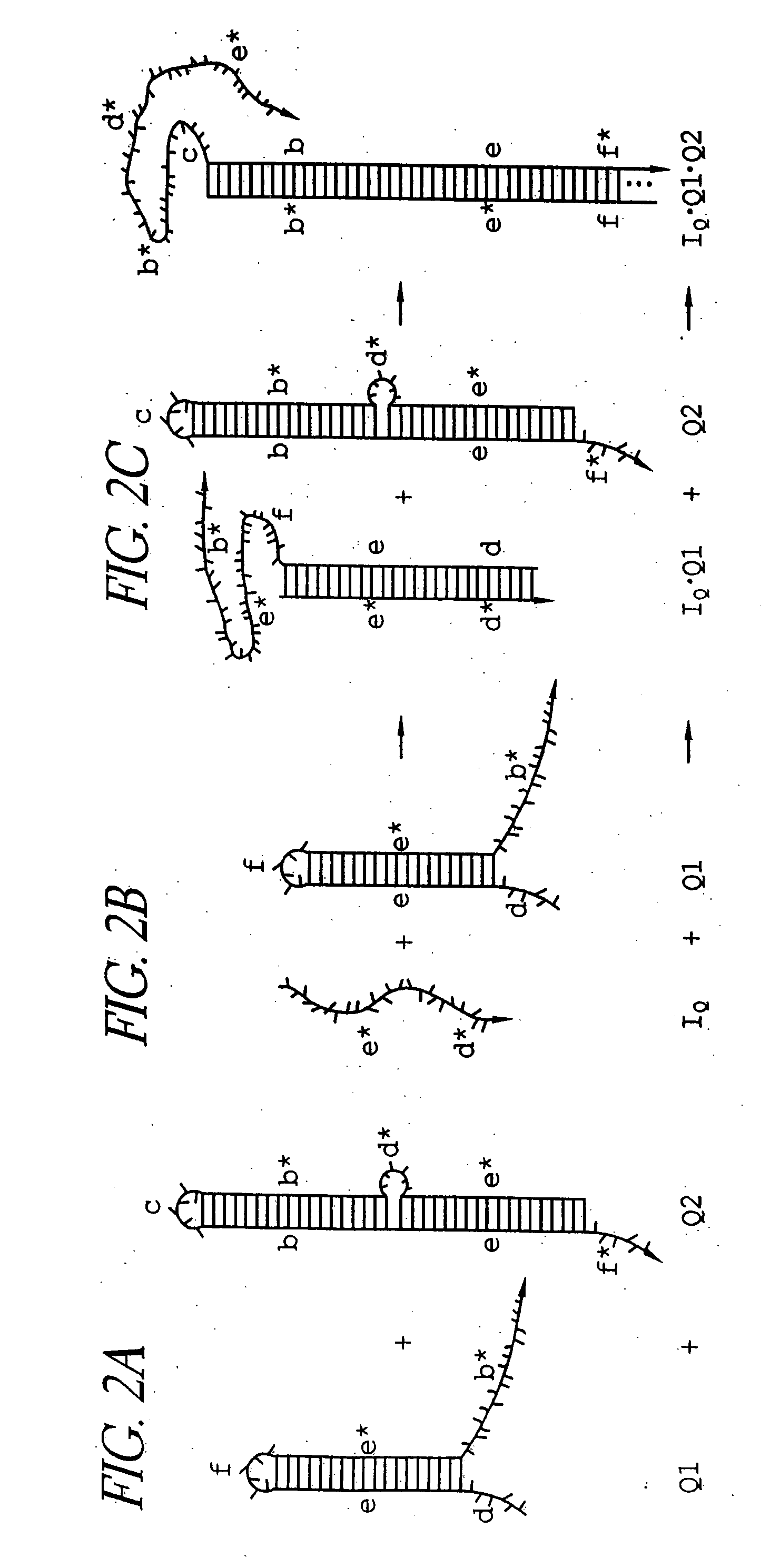Hybridization chain reaction amplification for in situ imaging
a hybridization chain and in situ imaging technology, applied in biochemistry apparatus and processes, organic chemistry, sugar derivatives, etc., can solve the problems of low sensitivity, insufficient sensitivity for low-abundance mrnas imaging, and limitations of techniques, and achieve the effect of rapid amplifying a signal
- Summary
- Abstract
- Description
- Claims
- Application Information
AI Technical Summary
Benefits of technology
Problems solved by technology
Method used
Image
Examples
examples
[0112] HCR monomers comprising DNA sequences were designed using a combination of criteria (Dirks et al. Nucleic Acids Research 32:1392-1403 (2004)). These included sequence symmetry minimization (Seeman N. C. J. Theor. Biol. 99:237-247 (1982)), the probability of adopting the target secondary structure at equilibrium (Hofacker et al. Monatsh. Chem. 125:167-188 (1994)), the average number of incorrect nucleotides at equilibrium relative to the target structure (Dirks et al. Nucleic Acids Research 32:1392-1403 (2004)) and hybridization kinetics (Flamm et al. RNA 6:325-338 (2000)). The sequences of the monomers and initiator for the basic HCR system illustrated in FIG. 1 and the aptamer trigger HCR system illustrated in FIG. 5 are shown in Table 1. The aptamer system included new sequences to ensure compatibility with the fixed sequence of the aptamer. DNA was synthesized and purified by Integrated DNA Technologies (Coralville, Iowa).
TABLE 1SystemStrandSequence*BasicH15′-TTA ACC CAC...
PUM
 Login to View More
Login to View More Abstract
Description
Claims
Application Information
 Login to View More
Login to View More - R&D
- Intellectual Property
- Life Sciences
- Materials
- Tech Scout
- Unparalleled Data Quality
- Higher Quality Content
- 60% Fewer Hallucinations
Browse by: Latest US Patents, China's latest patents, Technical Efficacy Thesaurus, Application Domain, Technology Topic, Popular Technical Reports.
© 2025 PatSnap. All rights reserved.Legal|Privacy policy|Modern Slavery Act Transparency Statement|Sitemap|About US| Contact US: help@patsnap.com



